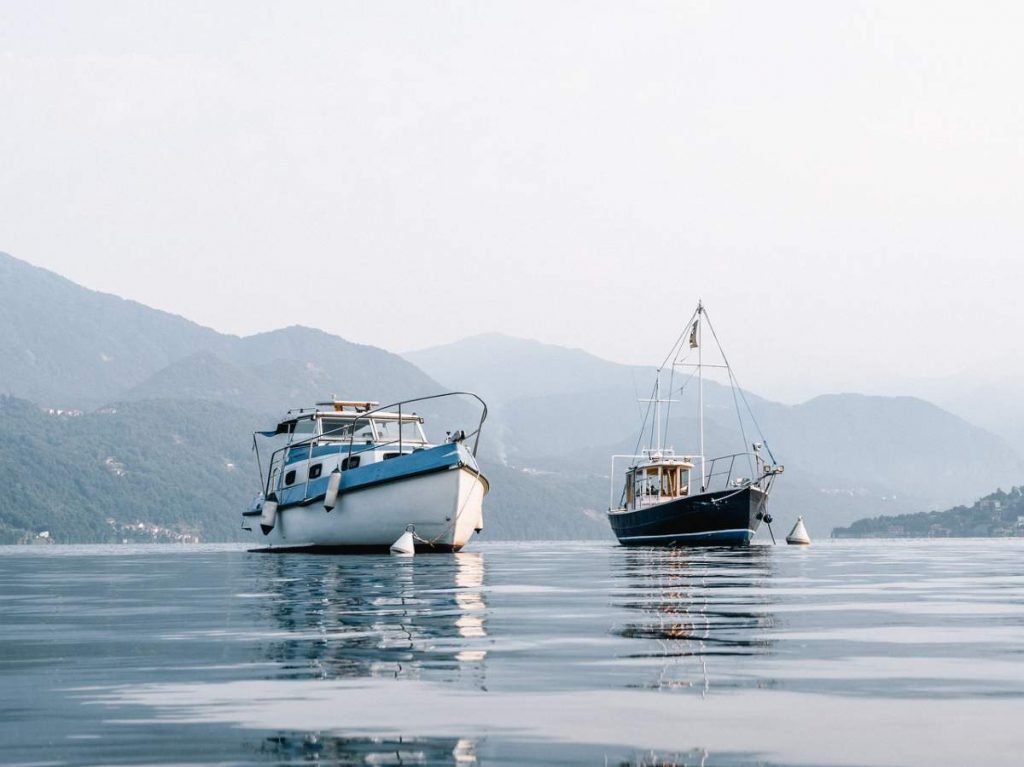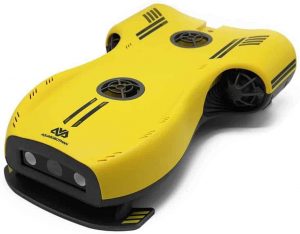Boat hull types fall into only three categories. These boat hull categories are displacement, semi-displacement, and planing hulls. Displacement hulls ride in the water and move through the water, displacing it. And therefore, planing hulls are intended to move over the water. This is comparable to a stone skipping or in other words, planing across the surface. In this article, we examine all these hull types with full explanations of how each one works so you can figure out which is best suited for you.
Which Boat Hull Is Best?
Deciding which boat hull type is best really depends upon your intended use of the boat. If you were to want a stable, small fishing boat, for example, it would be likely you would choose a boat with a displacement hull type. In particular a flat bottom style due to its stability. Now if your goal was to paddle around rivers and small lakes, then a canoe (displacement hull) would be the way to go.
Before we dive into the world of hulls, let’s get a few things straight.
Friction
According to Wikipedia:
“Friction is the force resisting the relative motion of solid surfaces, fluid layers, and material elements sliding against each other”
Drag
On the site Seatalk.info, drag is defined as:
“The friction resistance of the water on the hull of a moving ship, one of the functions that are used to determine the ship’s potential speed.”
- Hull Speed – The theoretical most efficient speed of a boat. This is based upon the equation: 1.34 x Square Root of the length of waterline on the hull. Hull speed is in knots.
- Knots – Units of measuring speed used in sailing. A knot is a nautical mile or the equivalent of 1.8520 km or 1.1508 mi per hour. Derived from the ancient method of dropping a rope line from a ship and counting how many knots would leave the vessel in 30 seconds. The knots were tied 47’ 3” from one another. This way a vessel crew could measure the ships relative speed. Keep in mind the speed was relative to the water and with currents included, a ship could technically be traveling faster or slower in relation to actual land, than the knot measuring method would show.
- Chine – Wikipedia says that chine (in boating) refers to a sharp change in the angle of the cross-section of the hull.
Let’s dive a bit deeper into hull design, no pun intended.
Displacement Hulls
Example: Large Ships like cruise liners or oil tankers, Sailboats, Round Bottom Canoe or Kayak
Displacement hulls work be dividing and cutting their way through the water. And Displacement hulls tend to travel significantly slower than planing hulls due to drag aka friction with the surrounding water.
Advantages of Displacement Hulls:
This type of haul is very efficient despite being deeper withing the water than a planing hull. Displacement hulls are typically more stable than planing hulls. As such, they are the hull of choice for larger vessels. This is especially those transporting large amounts of goods like cargo ships.
Displacement Hull Disadvantages:
Round bodied displacement hulls like canoes are efficient but sacrifice stability.
How A Displacement Hull Works
A displacement hull uses energy to travel. The energy is relatively equal to the amount of water which the hull must displace. This, of course, relates directly to the weight of the ship. The wave of water which the hull displaces is what is fighting back on the ship trying to move forward through the water. Given the sinusoidal nature of the displacement wave, there are several sneaky solutions that shipbuilders use. These are to help displacement hulled vessels use less energy to travel.
Have you ever seen a picture of a large cargo ship unloaded or out of the water? Take a look at the picture above. Notice the ‘bulb’ sticking out from the front of the ship. Looks funny, right? Well, this is science in action. Take the hull speed into account for a minute.
Displacement Hull Boat Speeds
The speed of a boat is calculated by the formula 1.35 x square root of the length of the hull water line. This doesn’t mean the ship can’t go faster, but it would be inefficient to do so. To cheat this, ship designers added the bulb on the front of the ship, under the waterline. This causes the ship’s displacement wave to be canceled out by the displacement wave of the bulb. In effect, this allows the vessel to travel faster than its hull speed efficiently and without wasted energy.
Displacement Hull Types
Round Bottom Hull
A typical example of a round bottom displacement hull is the canoe. Canoes travel almost effortlessly through the water. However there is always a trade-off and in this case, it is stability. A round hull design moves with extremely small effort through the water. The issue with this particular design is that it trades off stability. This is due to the ease of roll from side to side. Therefore no one should ever attempt standing in a canoe unless they have stable balance and the water is calm.
Canoes – Typical Displacement Hull
Canoes also tend to be difficult to handle in rough water. Therefore a canoe is not the best choice for a fishing boat. That is unless used on calm and stable bodies of water. There are numerous amazing canoe fishing locations. They are across not only the province I live in (Ontario, Canada) but across all of North America and beyond as well.
Now I mentioned that canoes are typically round hull, but depending on the degree of curve, the width of the body and so on, it can morph itself into more of a planing hull design. The same is true for kayaks. When researching kayaks, I found that they can be obtained in basically 4 hull designs, only one of which fits into this rounded hull category.
S-Shaped Hulls
An s-shaped hull is typical of deep bottom canoes and of course sailboats having the most extremely pronounced deep keel. These hulls are smooth, and typically lack the chined designs of planing hulls.
Semi-Displacement Hulls
Examples of Semi-Displacement Hulls: Coastal Trawlers, Cabin Cruisers, Tug Boats
Semi-displacement hulls are those which are hybrids between planing and displacement hull types. The marriage between the two types of hulls allows vessels to take advantage of both efficiency and speed.
Planing Hulls
Examples: Jet Skis, Powerboats
A planing hull, as previously mentioned, is a type of hull that is designed to ride over the water. The boat skips over the surface and does so at faster speeds than displacement type hulled boats.
A jetski, or powerboat that would be used to tow tubes, wakeboards or water skiing, for example, would all be designs of planing hull boats. Due to the fact that the boat rides higher in the water the faster, it goes, these boats can achieve significantly greater speeds than boats that sit lower in the water. This is of course due to friction.
Semi-Displacement Hull Advantages:
Great for speed. These types of boats can go faster than the displacement hull type of boats. These are the essence of speed boats, jet skis and so on, the ability to skim over the water, rather than cut through it.
Semi-Displacement Hull Disadvantages:
Typically shorter ranged due to power requirements. These boats need to go faster to be effective and thus will use more fuel for distance traveled than a displacement hull design.
Planing Hull Types
Flat Bottom Planing Hull
Flat bottom planing hull boats are typically very stable in calm waters. This is why these types of boats are usually used in small lakes and calm moving rivers. They are the typical fishing boat design.
Planing Hull Advantages:
Planing hull boats are super stable on calm water. Gets up to higher speeds with minimal effort.
Planing Hull Disadvantages:
Boats with a planing hull are typically unstable in choppy water.
Here is a typical flat-bottomed row-boat. These are often used for fishing boats on small bodies of water. The flat hull offers amazing stability in calm waters.
V-Shaped Planing Hull
The v-shaped planing hull is one of the most common hull design types found on small to medium-sized powerboats. This design reduces displacement and helps to lift the boat above the water to achieve the greater speeds which planing hulled boats are known for. This design is often a chined design, which means the angles change somewhat drastically. This is compared to the rounded hull of the displacement styled hull designs. The chined hull allows the boat to achieve ‘grip’ as it planes across the water at speed.
Without a chined hull, if a v-shaped planing hull was rounded instead, it would skip across the water when trying to turn. It would be like drifting a car but on the water. And just like a car, this would offer a greater risk to flip the boat which is why the new designs of v-shaped hulls are all chined.
Bibliography
Boat Hull Types – Which Boat Hull Is Best?
A Guide To Lake Fishing On A Boat
Everything You Need To Know About Boat Anchors (A Quick Read)
Pontoon Boat Basics
Boating Safety – Life Vest And Life Jacket Types
4 Common Types Of Propulsion For Boats
More From Boating Guide Magazine
- The Complete Runabout Boat & Trailer Towing Guide
- 4 Common Types Of Propulsion For Boats
- Before You Buy Guide: Understanding Fish Finders And GPS
- A Complete Catamaran Guide
- Boating Gear Requirements For Canada And USA Waters
- Aluminum vs. Fiberglass Bass Boats
- Can A Catamaran Capsize?
- Boating Safety – Life Vest And Life Jacket Types
- A Guide To Lake Fishing On A Boat
- Specialty Clothing For Different Water Sports
Return to Home * About Boating Guide Magazine * About the Author





















